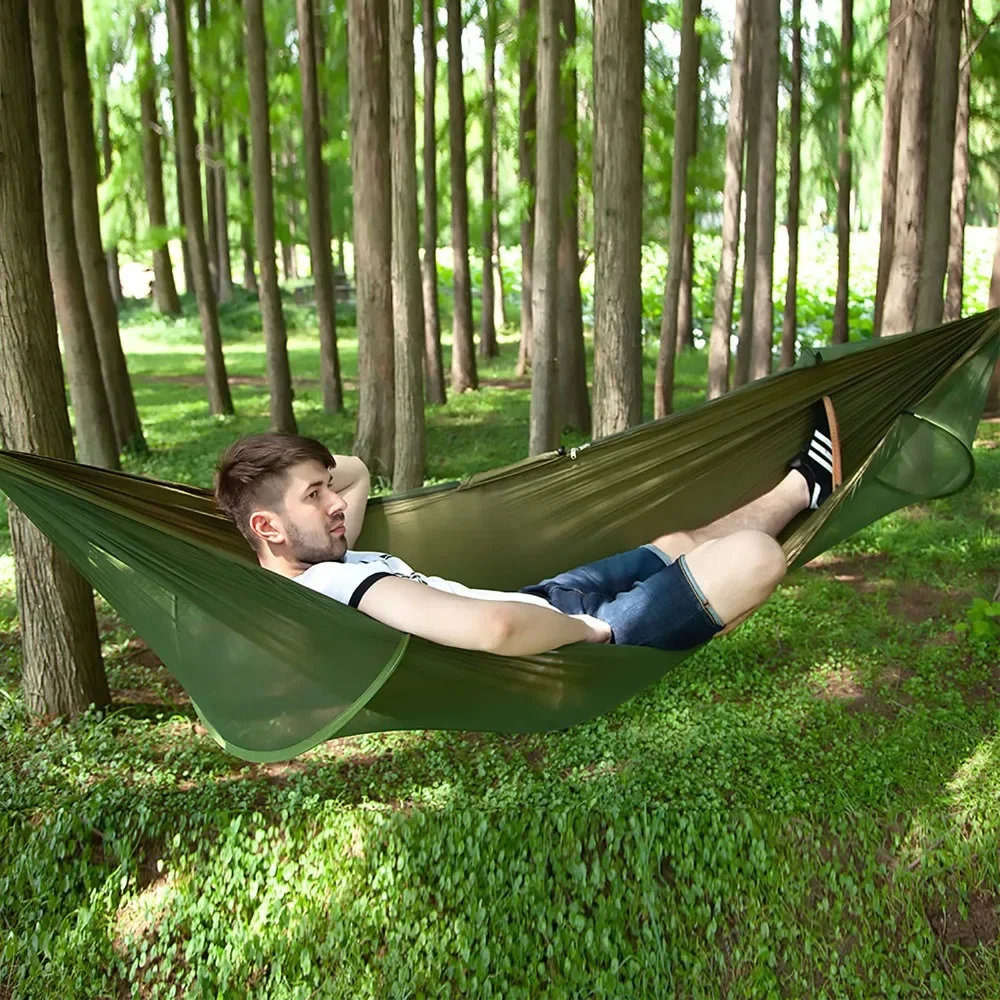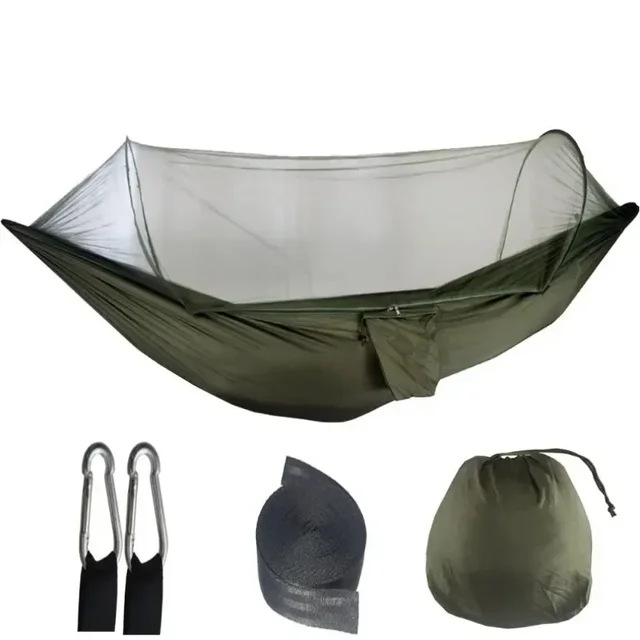Sleeping in a hammock can be a wonderfully relaxing and unique experience, offering a gentle sway and a natural connection to the outdoors. However, to make the most of your hammock sleep, it’s essential to consider factors that affect comfort and safety. This comprehensive guide covers everything you need to know about hammock sleeping, from choosing the right hammock to ensuring a safe and restful night.
Choosing the Right Hammock
Selecting the Appropriate Material
The material of your hammock plays a significant role in your overall comfort. Hammocks come in a variety of fabrics, each with its own set of benefits. Cotton hammocks are soft and breathable, making them ideal for warmer climates. However, they may not be as durable or weather-resistant as synthetic options. Nylon and polyester hammocks are more resistant to weather and insects, making them suitable for outdoor use. Consider the climate and your personal preferences when selecting the material to ensure a comfortable night’s sleep.
Determining the Right Size and Style
Hammocks come in different sizes and styles, each designed for various uses. Single hammocks are perfect for solo use, while double hammocks offer extra space for couples or those who prefer more room. When choosing a size, consider your height and the space available for hanging the hammock. Additionally, hammock styles can vary from traditional Brazilian and Mayan designs to more modern camping and travel hammocks. Each style offers different features, such as built-in mosquito nets or storage pockets, so choose one that aligns with your needs.

Setting Up Your Hammock
Finding the Perfect Hanging Spot
Choosing the right location for hanging your hammock is crucial for both comfort and safety. Look for two sturdy anchor points, such as trees or posts, that are spaced appropriately for your hammock. Ensure that the anchor points are robust and healthy; avoid trees with signs of decay or damage. The distance between the anchor points should be about the length of your hammock plus some extra slack to achieve the desired sag. The ideal height for hanging the hammock is approximately eye level, which allows for easy entry and exit.
Ensuring Proper Tension and Height
Once you’ve selected the location, adjust the hammock to achieve the correct tension and height. The hammock should have a gentle sag, forming a slight curve when you’re lying in it. If the hammock is too tight, it may feel uncomfortable and put undue stress on the fabric. Conversely, if it’s too loose, you may experience excessive swaying or difficulty getting in and out. Test the tension by gently applying pressure with your weight and make adjustments as necessary. Ensure that the hammock is hung at a comfortable height, allowing you to easily sit down and get up without straining.
Preparing for a Comfortable Night’s Sleep
Choosing the Right Sleeping Position
The way you position yourself in the hammock can greatly affect your comfort. While it may seem natural to lie flat, sleeping diagonally in the hammock is often more comfortable. This position allows you to lie more horizontally and reduces the pressure on your back. Experiment with different angles to find the most comfortable sleeping position for you. Additionally, use a pillow or a rolled-up jacket to support your head and neck, enhancing your overall sleep quality.
Using Insulation and Padding
For a comfortable night’s sleep, especially in cooler weather, it’s important to use proper insulation and padding. Hammocks can be exposed to cooler temperatures, and without adequate insulation, you may feel cold or uncomfortable. Use a sleeping pad or underquilt designed specifically for hammocks to provide insulation from the cold air underneath. These accessories help maintain warmth and prevent heat loss, ensuring a cozy and restful sleep.

Safety Considerations for Hammock Sleeping
Ensuring Secure Anchoring
Safety is paramount when sleeping in a hammock. Make sure that the hammock is securely anchored to robust and healthy trees or posts. Inspect the straps, ropes, or chains used to hang the hammock for signs of wear or damage before each use. If you’re using a portable hammock stand, ensure that it is set up on a level surface and is stable. Regularly check the hardware and connections to prevent accidents caused by faulty or worn-out equipment.
Avoiding Hazards and Obstacles
When setting up your hammock, be mindful of potential hazards and obstacles in your environment. Avoid placing the hammock near sharp objects, such as branches or rocks, which could cause injury if you accidentally fall out. Additionally, be cautious of insects and wildlife that may be attracted to your sleeping area. Using a hammock with a built-in mosquito net or applying insect repellent can help keep unwanted pests at bay.
Enhancing Your Hammock Experience
Creating a Relaxing Environment
To make the most of your hammock sleep, create a relaxing environment that promotes tranquility and comfort. Consider using a hammock with a built-in canopy or adding a tarp to protect against rain and wind. Bring along cozy blankets, a favorite book, or calming music to enhance your relaxation. Setting up your hammock in a peaceful and scenic location, such as a quiet forest or by a serene lake, can further elevate your hammock experience.
Incorporating Hammock Accessories
Enhancing your hammock setup with accessories can add an extra layer of comfort and convenience. Consider using a hammock pillow, which provides additional neck and head support. A hammock organizer or gear pouch can help keep small items within easy reach. If you plan to use the hammock for extended periods, a hammock chair or stand can offer added versatility and comfort. Explore various accessories to find the ones that best suit your needs and preferences.
Dealing with Weather and Environmental Factors
Protecting Against Rain and Wind
Weather conditions can significantly impact your hammock experience. To protect against rain and wind, use a rain fly or tarp that covers your hammock and provides shelter. Ensure that the rain fly is properly secured and angled to allow water to run off. In windy conditions, consider using additional stakes or guy lines to stabilize the rain fly and prevent it from flapping or collapsing. Preparing for weather changes and having the appropriate gear will help keep you comfortable and dry.
Managing Temperature Fluctuations
Temperature fluctuations can affect your comfort while sleeping in a hammock. During colder nights, use a sleeping bag or quilt rated for the expected temperature to stay warm. For warmer nights, opt for lightweight and breathable fabrics to avoid overheating. Additionally, layering your clothing and adjusting your insulation based on the temperature can help you stay comfortable throughout the night.

Packing Up and Maintenance
Properly Storing Your Hammock
After using your hammock, it’s important to store it properly to maintain its longevity and performance. Clean the hammock according to the manufacturer’s instructions, typically by hand washing or using a gentle cycle in the washing machine. Allow the hammock to dry completely before packing it away to prevent mold and mildew. Store the hammock in a dry and cool location, ideally in a breathable storage bag to keep it in good condition for future use.
Regular Maintenance and Inspections
Regular maintenance and inspections are essential for ensuring the safety and durability of your hammock. Check the fabric, straps, and hardware for signs of wear, damage, or deterioration before each use. Repair any minor issues promptly to prevent further damage. Follow the manufacturer’s care instructions and perform routine maintenance to keep your hammock in optimal condition. Regularly inspect the anchor points and setup to ensure a safe and secure sleeping environment.
Conclusion
Sleeping in a hammock offers a unique and enjoyable experience, but achieving the perfect balance of comfort and safety requires careful consideration. From choosing the right hammock and setting it up properly to preparing for a comfortable night’s sleep and managing environmental factors, each aspect plays a crucial role in enhancing your hammock experience. By following these tips and guidelines, you can ensure a restful and enjoyable hammock sleep, making the most of this relaxing outdoor activity.
